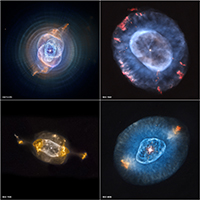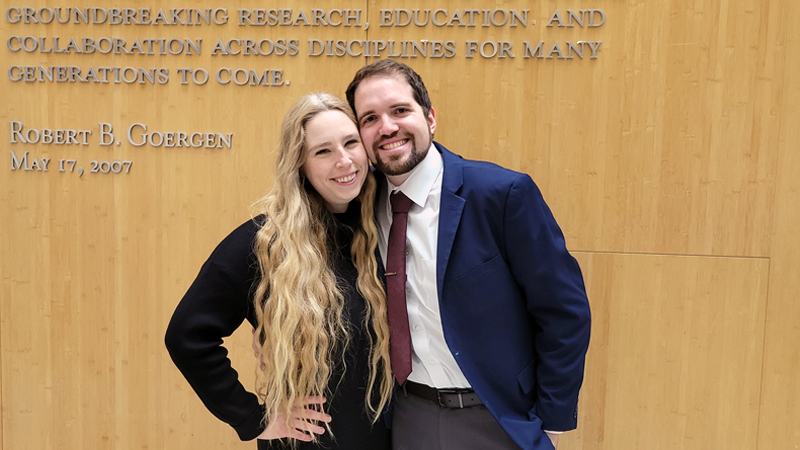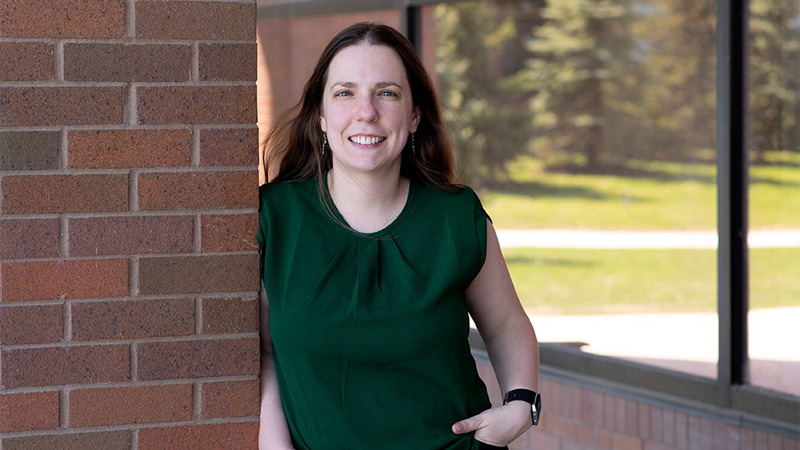AST Program Grad is now Researching Stars at the Smithsonian
RIT Astrophysical Sciences and Technology Ph.D. graduate Rodolfo (Rudy) Montez Jr. ’10 is now an Astrophysicist researching stars at the Center for Astrophysics | Harvard & Smithsonian.

“I really owe a lot to the time I spent in Rochester and at RIT.”
If you ask Rodolfo (Rudy) Montez Jr. ’10 the top two experiences at RIT that led him to where he is today, he would tell you it was the mentoring he received from faculty and the Astrophysical Sciences and Technology (AST) Ph.D. program's curriculum.
Rudy said his advisor, Dr. Joel Kastner was always available to chat about science when he needed it but knew when to let him grow independently. Rudy recognized Dr. Kastner's intentional mentorship approach based on a student's personality and needs. Today he uses this same technique to mentor his own students.
Exposed to a breadth of courses, Rudy found the Astrophysical Sciences and Technology program curriculum to be more comprehensive than other astrophysics programs. The studies in astrophysics, detectors, and imaging science provided a broad background and challenged him in different ways, which helped him improve his research and problem-solving skills.
Looking back, Rudy says the skills developed during his degree helped him stand out among his contemporaries. "The breadth of the coursework helped me develop and apply new techniques for studying X-ray observations. The same expertise is a large part of how I secured my current position."
Rudy found RIT different from other schools because he could share and hear ideas from across a broad range of majors (from photography and visual arts students to color and imaging science students). "This broad exposure is unique and not easily replicated. Broad exposure is important to open your mind and develop your creative approach to problem-solving."

Today, as an Astrophysicist at the Center for Astrophysics | Harvard & Smithsonian, Rudy performs some of the executive functions of the Chandra X-ray Observatory, one of NASA's four Great Observatories (on the same scale as the Hubble Space Telescope but studying the universe through more energetic X-ray emission). He does astrophysical research on evolved and dying stars using ground- and space-based observatories for a portion of his time.
"I primarily study what happens when a star like our sun ends its life. The star will undergo changes that eventually liberate much of the star's mass into the universe in a brilliant planetary nebula."
Rudy's roles and responsibilities are pretty extensive. He admits balancing and managing multiple projects can be challenging but says careful time management has helped him accomplish his goals. "The range of content we must learn and integrate into our work and research requires a deliberate studying ethic."
In addition to conducting original scientific research on evolved and dying stars, Rudy is involved in multi-institutional collaborations that offer undergraduate and graduate students research opportunities from underserved communities. He helps convey technical information about the spacecraft and its instruments to better inform the worldwide community of users.
Rudy serves as Lead Editor of the Proposers' Observatory Guide, an official NASA document of the spacecraft's technical information, and as Lead Editor of the bi-annual Chandra Newsletter. In addition, he helps organize annual scientific conferences that highlight and direct the scientific impact of the spacecraft through the Scientific and Local Organizing Committees for the annual science conference. Rudy also organizes review panels to evaluate proposals to use the telescope and other resources.
What advice does Rudy give to high school students reaching for the stars?
Astrophysics is an ever-expanding field with so many discoveries still to be made. Astrophysics of the future will continue to grow and require more and more computational skills. Traditionally, computer science is not a part of the standard Astrophysics curriculum. Soon a blend of astrophysics and computer science will be essential to tackle the data-intensive problems of astrophysics.
"Colleges with integrated opportunities and that foster collaborative endeavors are excellent indicators. Broad exposure is important to open your mind and develop your creative approach to problem-solving."
Photo Credit: X-ray: NASA/CXC/RIT/J.Kastner et al.; Optical: NASA/STScI













